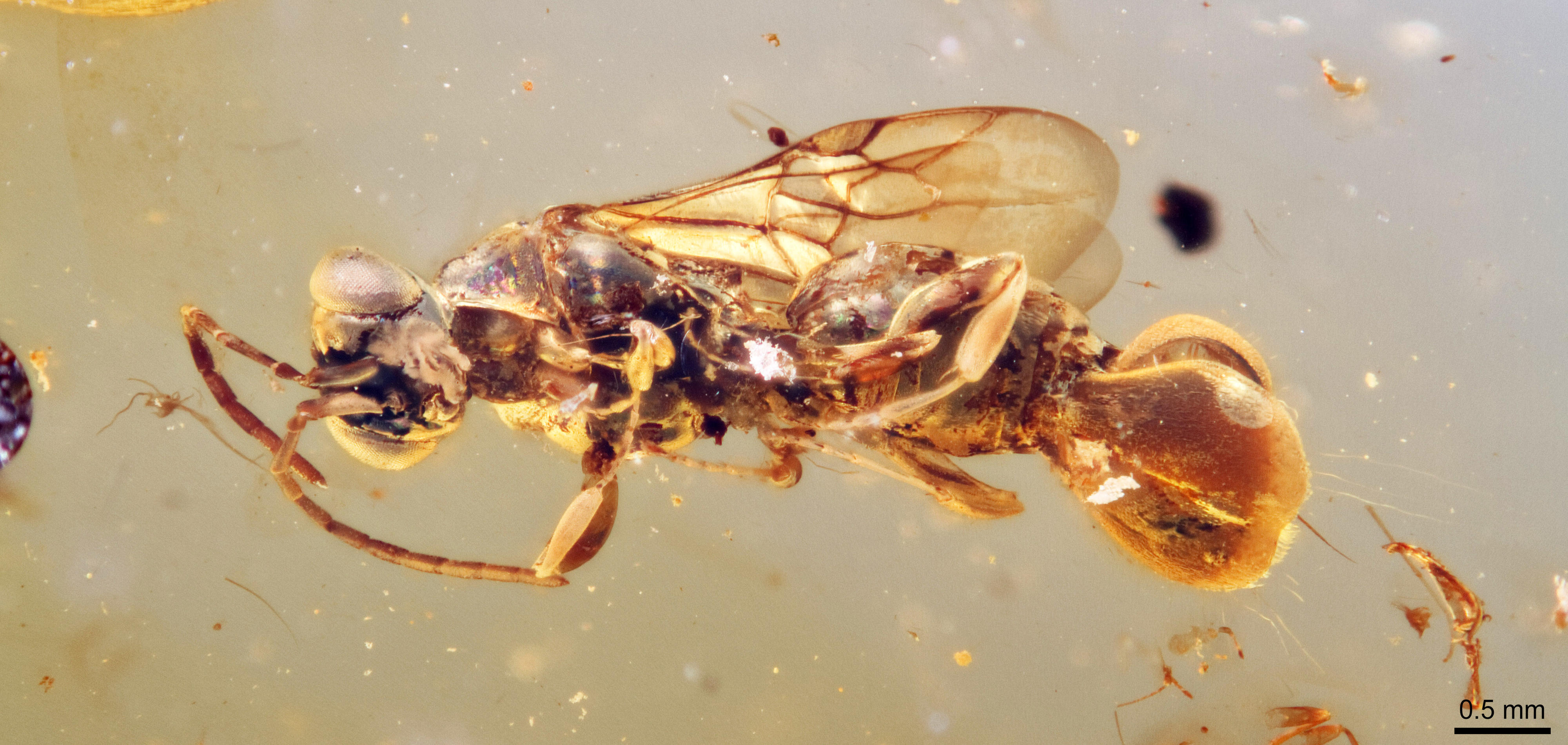Media release
From:
Fossils: Ancient parasitic ‘Venus flytrap’ wasp preserved in amber
An extinct lineage of parasitic wasps dating from the mid-Cretaceous period and preserved in amber may have used their Venus flytrap-like abdomen to capture and immobilise their prey. Research, published in BMC Biology, finds that the specimens of Sirenobethylus charybdis — named for the sea monster in Greek mythology which swallowed and disgorged water three times a day — date from almost 99 million years ago and may represent a new family of insects.
The morphology of S. charybdis indicates the wasps were parasitoids — insects whose larvae live as parasites and eventually kill their hosts. Modern-day parasitoids of the superfamily Chrysidoidea include cuckoo wasps and bethylid wasps. However, the S. charybdis specimens possess a unique pattern of veins in the hind wing that suggests the species belongs within its own family, the Sirenobethylidae.
Taiping Gao, Lars Vilhelmsen, and colleagues from the Capital Normal University, China, and the Natural History Museum of Denmark used Micro-CT scanning to analyse 16 female S. charybdis specimens preserved in amber dated to 98.79 million years ago. These specimens were collected from the Kachin region in northern Myanmar. They find the species was likely to have been a koinobiont — a parasitoid which allows its host to continue growing while feeding on it. The wasp specimens have an abdominal apparatus comprised of three flaps, the lower of which forms a paddle-shaped structure with a dozen hair-like bristles, visually reminiscent of a Venus flytrap plant. The authors note the abdominal apparatus of S. charybdis is unlike that of any known insect, and may have served as a mechanism to temporarily restrain the host during egg-laying. As the wasp was likely unable to pursue prey over long distances, they speculate that it would have waited with the apparatus open for a potential host to activate its capture response.
The authors believe the elaborate grasping apparatus allowed S. charybdis to target highly mobile prey such as small, winged or jumping insects. The preserved specimens suggest that Chrysidoidea displayed a wider range of parasitoid strategies in the mid-Cretaceous period than their present-day counterparts.
Multimedia






 International
International



